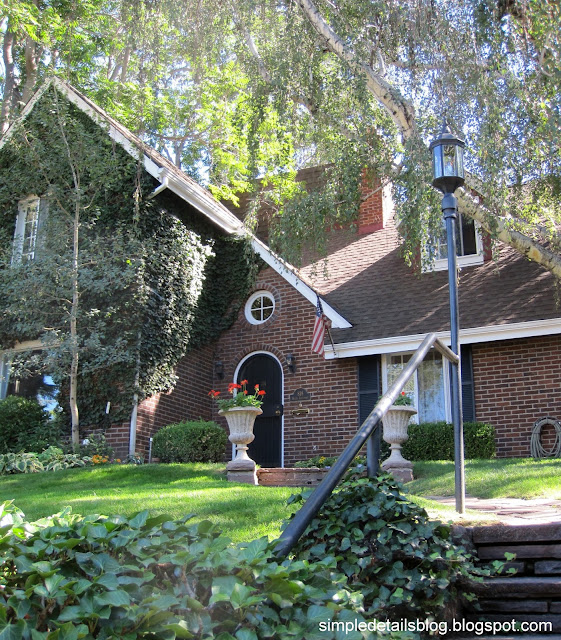Thanks for all the awning love everyone! :)
If you're not into DIY details, and just want pretty pictures check out the
awning reveal.
It's rained for three days and it's working just like an awning should!
I always hold my breath with diy projects like that, never knowing for certain how
they'll perform in the end. This is totally off subject, but that reminded me...remember last
March when I painted my
bathroom fixtures and shower surround - they are still holding
up perfectly after six months. I'll let you know on the awning.
Step 1 - Frame
Find a student enrolled in a welding course to construct a frame for you, if they happen
to be your awesome neighbor that's best! They're easy to find, check out this article from
The Denver Post, '
Welding is the new hot course on campus.'
I played around with cardboard and duct tape to
construct a mock up to determine
the right size. You'll want to consider the width, drop and projection.
Mine measured 64" W x 13" D x 18" P
Our trim above the door dictated our measurements, if given a choice I would
have chosen a longer drop. My
'awning prototype' post shows several examples of
different styles.
We purchased Weldable Square Steel Tubing from Lowes
here.
I went on vacation and left the rest to the pro and he constructed it to the specifications of the
mock up and also painted it for me, a great idea, it's dirty, and you'll be handling it a lot.
Our size required 4 - 6' pieces @ $22 ea. = $88
Step 2 - Fabric Cover
I purchased 2 yards of a classic black and white stripe outdoor fabric.
Use the frame to make a pattern for the end pieces, add 1/2" seam allowance to all the edges
before cutting your fabric. Line your pattern up with the edge of the stripes, your seam
allowance should extend past the edge of the stripe. Measure for the additional length of your
awning that will fall below the frame. I chose 8", but it will vary depending on the size and
scale you like. Cut two, one for each end.

I'm sorry I didn't take a picture of measuring for the main piece of fabric, but it's super easy,
the width of your frame + 1" for seam allowance X the height of your frame + the
amount of fabric you want to fall below the frame, again I chose 8" + 1" seam allowance.
Mine looked like this:
64" + 1" = 65 " Wide X 22" + 8" + 1" = 31" Height
Next we'll sew the end pieces onto the main piece of fabric, with right sides together
pin and sew. I didn't sew all the way down to the bottom edge, I wanted to make
sure I got a good fit with the corners first. I found it easiest to bring the frame in and
put it on the counter, I put the cover over it and ended up tweaking it a bit, I took it in
about a 1/4 " at a time until I liked the fit. Then sewed down the entire length of it.
After you have your fit finalized press all seams down on the front and back side of your
fabric to insure professional looking seams.
 Step 3 - Mounting the Frame
Step 3 - Mounting the Frame
Before mounting the frame against our house I secured several pieces of 3/4" velcro along the
top edge, front edge and ends of the frame, as well as the fabric, measuring to be sure
they match up.
We used three large bolts to secure the frame to our house, first drilling three holes into the
steel tubing frame and then aligning pilot holes on the house trim for the bolts.

Step 4 - Tweak!
Secure the fabric to the velcro and tweak away, the velcro allows for some flexiblility as far as
adjusting, but unfortunately they'll all probably be a bit different at this point. I opted for a
looser more relaxed look in the end leaving a little slack in mine. It helped with the buckling
you see at the corners.
Hope you're inspired to find a teenager with some welding skills and give it a try!
Thanks, J ~ I couldn't have done it without you!





















































































